Related Research Articles

The Peenemünde Army Research Center was founded in 1937 as one of five military proving grounds under the German Army Weapons Office (Heereswaffenamt). Several German guided missiles and rockets of World War II were developed by the HVP, including the V-2 rocket. The works were attacked by the British in Operation Crossbow from August 1943, before falling to the Soviets in May 1945.
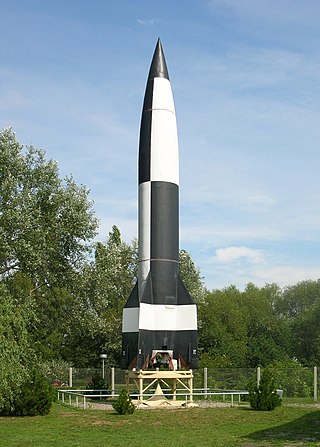
The V-2, with the technical name Aggregat 4 (A-4), was the world's first long-range guided ballistic missile. The missile, powered by a liquid-propellant rocket engine, was developed during the Second World War in Nazi Germany as a "vengeance weapon" and assigned to attack Allied cities as retaliation for the Allied bombings of German cities. The V-2 rocket also became the first artificial object to travel into space by crossing the Kármán line with the vertical launch of MW 18014 on 20 June 1944.

Wernher Magnus Maximilian Freiherr von Braun was a German and American aerospace engineer and space architect. He was a member of the Nazi Party and Allgemeine SS, and the leading figure in the development of rocket technology in Nazi Germany and later a pioneer of rocket and space technology in the United States.

Hermann Julius Oberth was an Austro-Hungarian-born German physicist and rocket pioneer of Transylvanian Saxon descent. He is considered one of the founding fathers of rocketry and astronautics, along with Robert Esnault-Pelterie, Konstantin Tsiolkovsky, Robert Goddard and Herman Potočnik. Oberth supported Nazi Germany's war effort and received the War Merit Cross in 1943.

Operation Paperclip was a secret United States intelligence program in which more than 1,600 German scientists, engineers, and technicians were taken from the former Nazi Germany to the U.S. for government employment after the end of World War II in Europe, between 1945 and 1959. Conducted by the Joint Intelligence Objectives Agency (JIOA), it was largely carried out by special agents of the U.S. Army's Counterintelligence Corps (CIC). Many of these Germans were former members and some were former leaders of the Nazi Party.

Major-General Dr. Walter Robert Dornberger was a German Army artillery officer whose career spanned World War I and World War II. He was a leader of Nazi Germany's V-2 rocket programme and other projects at the Peenemünde Army Research Centre. After the war, the US Nazi scientist recruitment programme Operation Paperclip saw him move to the US, largely avoiding punishment for involvement in war crimes, to work for some decades in high positions in aerospace, including for Bell Aircraft and Boeing.
Walter Thiel was a German rocket scientist.
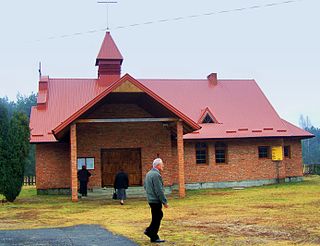
Blizna is a village in the administrative district of Gmina Ostrów, within Ropczyce-Sędziszów County, Subcarpathian Voivodeship, in south-eastern Poland. It lies approximately 12 kilometres (7 mi) north of Ostrów, 12 km (7 mi) north of Ropczyce, and 34 km (21 mi) north-west of the regional capital Rzeszów.

The Aggregat series was a set of ballistic missile designs developed in 1933–1945 by a research program of Nazi Germany's Armed Forces (Wehrmacht). Its greatest success was the A4, more commonly known as the V-2.
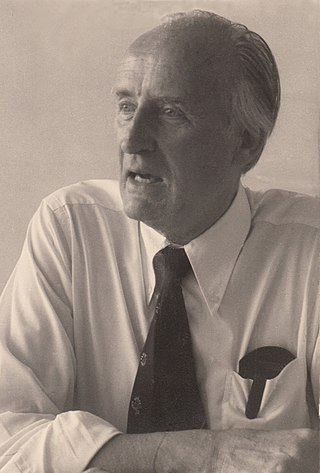
Helmut Gröttrup was a German engineer, rocket scientist and inventor of the smart card. During World War II, he worked in the German V-2 rocket program under Wernher von Braun. From 1946 to 1950 he headed a group of 170 German scientists who were forced to work for the Soviet rocketry program under Sergei Korolev. After returning to West Germany in December 1953, he developed data processing systems, contributed to early commercial applications of computer science and coined the German term "Informatik". In 1967 Gröttrup invented the smart card as a "forgery-proof key" for secure identification and access control or storage of a secure key, also including inductive coupling for near-field communication (NFC). From 1970 he headed a start-up division of Giesecke+Devrient for the development of banknote processing systems and machine-readable security features.

Erich Rudolf Alexander Regener was a German physicist known primarily for the design and construction of instruments to measure cosmic ray intensity at various altitudes. He is also known for predicting a 2.8 K cosmic background radiation, for the invention of the scintillation counter which contributed to the discovery of the structure of the atom, for his calculation of the charge of an electron and for his early work on atmospheric ozone. He is also credited with the first use of rockets for scientific research.

Peenemünde Airfield is an airfield on the Baltic Sea coast, north of Peenemünde, Germany. Today, round trips in light aircraft are available from Peenemünde Airfield. There are also bus tours which visit the former shelters of the East German National People's Army (NVA) and the remnants of the V-1 flying bomb facilities. Because of its long runway, the airfield is also a location for flight schools.
Walter J H "Papa" Riedel was a German engineer who was the head of the Design Office of the Army Research Centre Peenemünde and the chief designer of the A4 (V-2) ballistic rocket. The crater Riedel on the Moon was co-named for him and the German rocket pioneer Klaus Riedel.
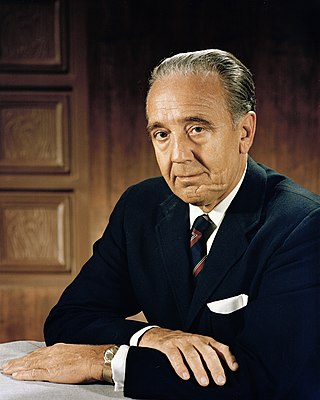
Kurt Heinrich Debus was a German-American rocket engineer and NASA director. Born in Germany, he was a member of the Schutzstaffel (SS) during World War II, where he served as a V-weapons flight test director. Following the war, he was brought to the United States via Operation Paperclip, and directed the design, development, construction and operation of NASA's Saturn launch facilities. He became the first director of NASA's Launch Operations Center, and, under him, NASA conducted 150 launches of military missiles and space vehicles, including 13 launches of the Saturn V rocket as part of the Apollo Moon landing program.
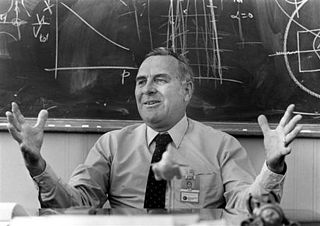
Werner Karl Dahm was an early spaceflight scientist of the Peenemünde Future Projects Office who emigrated to the US under Operation Paperclip and was the Marshall Space Flight Center Chief Aerodynamicist.
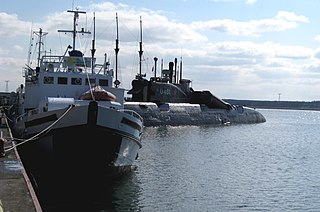
Peenemünde is a municipality on the Baltic Sea island of Usedom in the Vorpommern-Greifswald district in Mecklenburg-Vorpommern, Germany. It is part of the Amt of Usedom-Nord. The community is known for the Peenemünde Army Research Center, where the world's first functional large-scale liquid-propellant rocket, the V-2, was developed.

The Peenemünde Historical Technical Museum, former "Peenemünde Information Centre for History and Technology", is a museum, founded in 1991, in the observation bunker and site of the former power station in Peenemünde on the island of Usedom in eastern Mecklenburg-Vorpommern in Germany. The museum is dedicated to the history of the Peenemünde Army Research Centre and the Luftwaffe test site of "Peenemünde-West", especially the rockets and missiles developed there between 1936 and 1945. Since January 2007 the information centre has become an anchor point on the European Route of Industrial Heritage (ERIH), a Europe-wide network of industrial monuments, and a part of the ERIH themed routes for Energy and Transport & Communication.
Werner Richard Kuers was a German-American engineer and expert in guided missiles. Kuers worked at Peenemünde Army Research Center in manufacturing and later, as part of the "von Braun rocket group" through Operation Paperclip, at White Sands V-2 Launching Site and the Marshall Space Flight Center.
Gerhard Herbert Richard Reisig was a German-American engineer and rocket scientist. He worked at the Peenemünde Army Research Center during World War II and later, through Operation Paperclip, at the Marshall Space Flight Center.
References
- 1 2 Neufeld, Michael J (1995). The Rocket and the Reich: Peenemünde and the Coming of the Ballistic Missile Era . New York: The Free Press. p. 256. ISBN 9780029228951.
- ↑ Kliebenschedel, Thomas. "Die Geburt der Forschungsmethodik "extraterrestrische Physik"" [The Birth of Extraterrestrial Physics Research Methods] (in German). Retrieved 2023-08-31.
- ↑ von Ardenne, Manfred (1976). Ein glückliches Leben für Technik und Forschung (in German). Berlin: Verlag der Nation. p. 143.
- ↑ Braun, Wernher von; Ordway III, Frederick I; Dooling, David Jr (1985) [1975]. Space Travel: A History. New York: Harper & Row. p. 54. ISBN 0-06-181898-4.
- ↑ Dornberger, Walter (1952). V2--Der Schuss ins Weltall (in German). Esslingan: Bechtle Verlag. p. 226.
- ↑ Klee, Ernst; Merk, Otto (1963). The Birth of the Missile: The Secrets of Peenemünde. Hamburg: Gerhard Stalling Verlag. pp. 111, 113, 126.
- ↑ Ley, Willy (1951) [1944]. Rockets, Missiles and Space Travel . New York: The Viking Press. p. 254.
- Kliebenschedel, Thomas. "The Birth of Extraterrestrial Physics Research Methods". A4 (V2) rocket manufacturing plant in Friedrichshafen 1942-45. www.V2Werk-Oberraderach.de. Retrieved 2009-01-26.